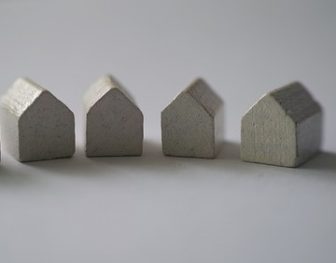 The negative effects of higher mortgage rates on affordability were overestimated throughout 2023 with house prices having dropped 1-2% instead of the consensus forecast of 6%, fresh research has shown.
The negative effects of higher mortgage rates on affordability were overestimated throughout 2023 with house prices having dropped 1-2% instead of the consensus forecast of 6%, fresh research has shown.
A strong positive change within the market was the supply of ‘New Instructions’ which were surprisingly up by 2% compared to 2022 and continued to average c400,000 per quarter, closer to a volume seen in a ‘normal’ market.
Although a proportion of these new listings were a consequence of homeowners struggling to afford increased mortgage payments and therefore downsizing or selling up, there was still a substantial and solid core of activity.
On average, sellers across the UK achieved 96.6% of their original asking price, a decrease from the 99.4% achieved in 2022 and while transactions dropped by 20% to around 1 million sales last year, this signified a return to pre-pandemic levels, while fall throughs have declined year on year by 14%
The findings are part of the latest Property and Homemover Report from data insight specialist, TwentyCi. The report compares 2022 with 2023.
Economist, Alex Bannister, and independent board advisor to TwentyCi said: A year ago, the consensus forecast* suggested residential property prices in the UK would drop by 6% in 2023 amidst a shrinking economy and a view that property was substantially overvalued.
“In reality, house prices dropped by around 1-2% and the economy skirted recession despite higher-than-expected mortgage rates. Transaction levels dropped by 20% to return to pre-pandemic levels of around 1 million sales in 2023.
“It appears most commentators overestimated the negative effects of higher mortgage rates on affordability and while sellers reduced asking prices, this did little to reverse the pandemic-driven surge.”
*source HMT Dec 2022
Key Market Indicators:
Sales Agreed and Times to Sell
In 2023, there were 1,064,000 ‘Sales Agreed’, a fall of 12% compared to 2022 but this was a correction in direct consequence of the brake applied to the residential property market from the strong economic headwinds and the significant rise of interest rates and mortgage availability.
Despite the macro pressures, demand remains. With the mortgage market easing and consumer confidence ebbing higher, we anticipate an improvement throughout 2024.
‘Time to Sell’ has risen to 62 days in 2023, although this still stands at 18% lower than pre-pandemic norms.
The average asking price of property coming to market is £429,000, up by £7,000 compared to 2022, which is reflective of the type of stock available on the market.
On average, sellers across the UK achieved 96.6% of their original asking price, a decrease from the 99.4% achieved in 2022.
Sellers in Scotland enjoyed prices surpassing their initial instruction with a Price Instructed vs. Price Achieved of 105.9%. This is idiosyncratic of the Scottish property market whereby the purchaser is required to offer over an asking price or at a fixed price to secure the transaction.
Inner London fared the least favourably, with just 94.6% of Price Instructed vs. Price Achieved, with sellers forced to accept lower offers if they wanted to close a deal. Outer London similarly saw 95.7% of Price Instructed vs. Price Achieved, with buyers able to negotiate better deals.
Bannister added: “It’s impossible to guess the net effect of events such as the conflicts in Ukraine or the Middle East and a UK general election/related giveaway budget. Assuming these have minimal impact, and the labour market remains robust with inflation under control, there is no obvious trigger for a further reduction in average UK house prices.
“With rents rising fast, home ownership remains attractive and so prices remain underpinned given the limited supply of new homes. It’s undeniable that affordability is challenging for first-time buyers and those trading up, but it’s unlikely homeowners will ‘slash’ prices to ensure a sale rather than delay a move.
“Transaction levels are therefore likely to remain subdued at around 1 million for another year. With household incomes rising and assuming interest rates remain at (or below) their current peak, I’d expect UK house prices to rise by 0-5%.”
Price Changes and Withdrawn volumes have both jumped significantly. Price alterations rose by 66% compared with 2022 as sellers became more realistic with their expectations, despite this, there has not been any major recalibration of property values.
For sellers, those with a property to sell are having to work harder to achieve a transaction while a decline in buyer demand is prompting a re-consideration of whether now is the right time to sell. Recent analysis highlighted that 46% of Withdrawn properties came back to the market within a year and 58% returned to the market within two years.
The volume of exchanges has fallen significantly, down by over 20% year on year. This figure is 13% lower than the pre-pandemic 2019. However, Fall Throughs have declined year on year by 14%.
Colin Bradshaw, TwentyCi’s CEO, said: “The housing market is holding up rather well despite everything being thrown at it. I am not saying all is rosy in the garden, rather given the circumstances 2023 could have been a whole lot worse.
“There is still a lot of uncertainty both in the housing market and the economy generally and yet there are some good signs that the market is both robust and, moreover, will stay that way in 2024.
“It’s likely that we have not yet seen the full impact of the interest rate rise “price shock” on mortgage availability and affordability due to fixed-rate products, but the market fundamentals seen to date, indicate strong potential for 2024.”


Comments are closed.